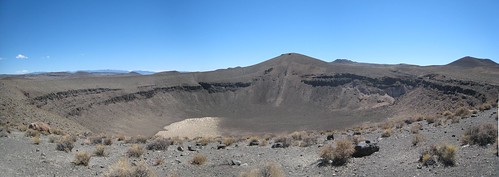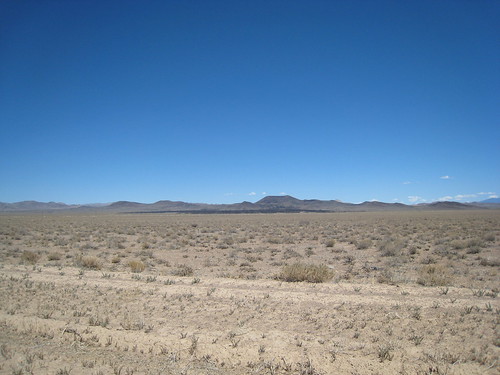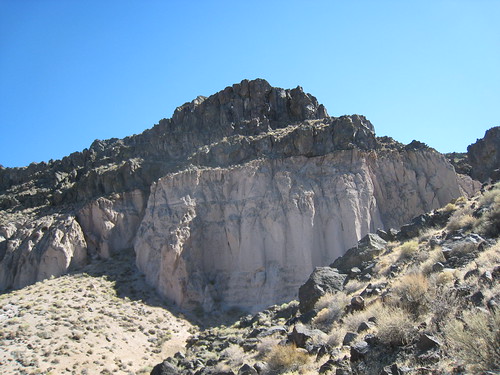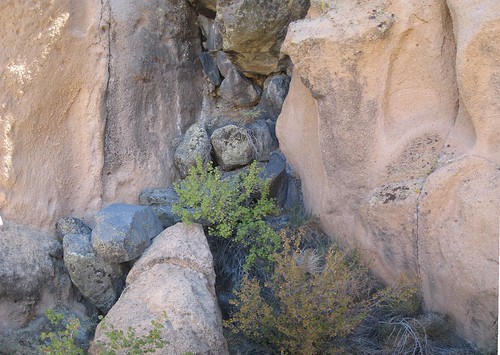
The field is approximately 10 km wide and 40 km long and is composed of a number of cinder cones, basalt flows, and at least two maars. Maars are low relief craters formed by the expansion of steam from the contact between magma and ground water, or by the expansion of magmatic gas. Lunar crater is a nearly circular maar 130 m deep and 1,050 m wide. The other maar in the field is named Easy Chair Crater and is located only a few km to the north.


The field was created during at least three active volcanic periods in the late Pliocene and Pleistocene (4 million - 15,000 years before present) as evidenced by three distinct basalt flows. The oldest flow is mostly covered with sand and vegetation [Sagebrush (Artemisia sp.) and Joinfir (Ephedra nevadensis)], but are exposed as the cliffs in lunar crater as the explosive steam broke its way through this oldest deposit. The intermediate flow has a thin sandy soil cover, less vegetation and is associated with the episode that created the two maars. The youngest flow is located at the north end of the field and has little to no soil or vegetation covering it, visible as the black patch in the below photo.

Lunar crater's most interesting features are a dike extending from the south side of the crater to a small cinder cone (opposite in above crater photo) and a playa-alluvial fan that has developed from a ephemeral stream that incised into a rhyolite and tuff layer. The fan-playa system has the expected decrease in particle size as you move from the fanhead to the playa. Because of the steep slope around the base of the crater, few or no cattle have appeared to have made it onto the crater floor, so the vegetation looks mostly undistributed. Salt tolerate greaswood (Sarcobatus vermiculatus) is found on the playa, sagebrush on the gravely fan, and a few currant (Ribes sp.) in the shadier and wetter site at the fanhead amongst boulders from the rhyolite and tuff.



Source:
Scott, D. and Trask, N. 1971. Geology of the Lunar Crater Volcanic Field, Nye County, Nevada. US Geological Survey Professional Paper 599-1.
1 comments:
Oh, this is cool - I haven't been down that way for quite a long time - and not to Lunar Crater since the late 70's. So neat to see some pictures.
Post a Comment